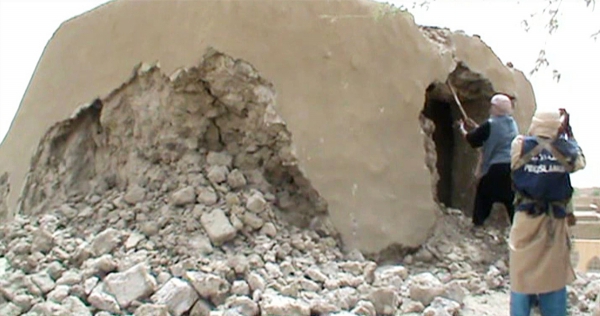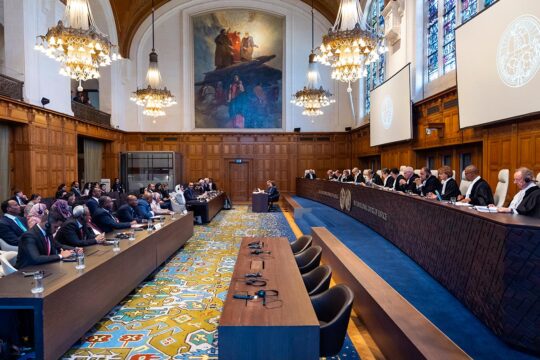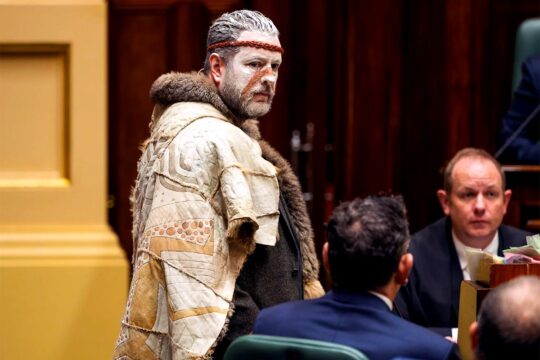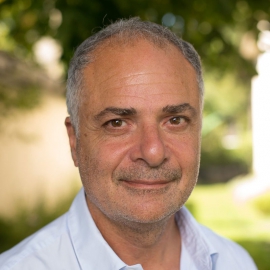In 2012, Jihadist groups seized northern Mali. They occupied the town of Timbuktu, intellectual capital of the Sahara and crossroads of different cultures and religions. The Jihadists methodically destroyed the unique cultural heritage of this City of 333 Saints. Fifteen of the town’s 16 mausoleums and the gate of the Sidi Yahia mosque, considered sacred by the inhabitants, were hacked and destroyed by groups linked to Al-Qaeda including Ansar Dine, in the name of fighting "idolatry". Some 4,200 manuscripts of the Ahmed Baba Institute of Advanced Islamic Studies and Research (IHERI-AB) were also burned by the Jihadists. The emblematic El Farouk monument at the entrance to the city was also destroyed. Fortunately, 370,000 other manuscripts were saved by moving them to Bamako.
The Jihadist groups imposed their law on northern Mali up to January 2013 when an international military operation was launched at the initiative of France. The same year, the Malian authorities, together with UNESCO, drew up an “Action Plan for the rehabilitation of Mali's cultural heritage and the safeguarding of ancient manuscripts”, which was finalized in February 2016.
Malian archaeologist Daouda Keïta participated in the reconstruction of Timbuktu’s mausoleums, working on issues related to the materials and building techniques to be used. He worked with the National Direction of Cultural Heritage (DNPC), which coordinated the reconstruction with architects, local masons descendants of the Saints and members of civil society. Pierre Hazan talked to him for JusticeInfo.
JusticeInfo.net: What do you think was irreversibly lost or destroyed by the Jihadists in Timbuktu?
Daouda Keïta: The aim of destroying the mausoleums was to damage the soul of Timbuktu’s people, because Timbuktu is known as the City of 333 Saints, revered for its mosques and mausoleums and religious leaders. By destroying its cultural heritage, the Jihadists wanted to destroy both the material and spiritual link that united its citizens to the mausoleums, which are places of prayer and gathering. The Saints are the protectors of the town. They are part of the identity of Timbuktu’s people, and the town is known throughout the world for these mausoleums honouring the Saints. These mausoleums also reflect the diversity and religious tolerance of Timbuktu. Those who are honoured include Songhoys, Arabs and Peuls. Behind the act of destruction, there was a desire to affect people’s minds. The Jihadists wanted visibility, and they used the media.
Do you know if the people of Timbuktu participated in the destruction?
I do not know if there were inhabitants of Timbuktu among the destroyers. But I do know there were Malians, especially people from places close to Timbuktu, among the town’s occupiers.
To what extent has the rehabilitation of the mausoleums involved the population, and do you think that is enough?
The process has involved a significant part of the population. Administrative authorities, local and communal authorities, civil society, masons and descendants of the Saints who are the owners of the mausoleums have all been involved. Let us remember that each family has its own masons who can only work on their family’s mausoleum. They are the only ones that can do this work. Some people have expressed dissatisfaction, because not everything has been restored identically. One person objected that an aspect essential in their eyes was omitted from the El Farouk monument, a sentence in Arabic that means "In memory of those who have died for Mali to exist".
Would you have liked the rehabilitation of the mausoleums to be done in a different way?
I am grateful to UNESCO for rebuilding the mausoleums. But I would have liked Mali and its people to take a more active part financially. We should not always wait on others for what we can do ourselves, especially since these are not astronomical sums. I think we could have raised the necessary sum through voluntary contributions.
Do you think the spiritual link between the people and the mausoleums has been rebuilt?
After the reconstruction, there were prayers to sanctify the mausoleums of Timbuktu. The rehabilitation has allowed the mausoleums to recover their spiritual dimension.
As a Malian citizen, what do you take away from the destruction and rebuilding of your country’s cultural heritage?
In conflicts, heritage always suffers damage, as we see in Syria, Iraq and Afghanistan. Such loss hurts the local community directly affected and the international community. Cultural heritage is vulnerable. So we need to take steps to preserve it before, during and after conflicts, involving all the parties concerned. Local communities need to play a big role in this process. That can also show the attachment of the people to their cultural heritage. We have seen how powerless people feel when their heritage is destroyed and how relieved they are when it is restored. The people identify with these mausoleums. Their destruction left a great void which only their rehabilitation could fill.







